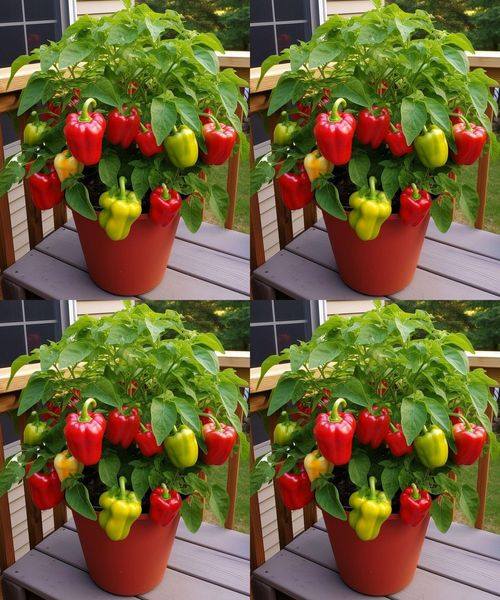ADVERTISEMENT
8. Fertilize Regularly
Pepper plants are heavy feeders, so they need regular feeding to thrive indoors. Use a balanced, water-soluble fertilizer with equal parts nitrogen (N), phosphorus (P), and potassium (K), or a fertilizer specifically formulated for peppers or vegetables. Apply the fertilizer every 2–3 weeks during the growing season, typically spring through early fall. Be sure to follow the instructions on the fertilizer packaging to avoid over-fertilizing.
9. Pollination Assistance
Indoors, there’s no breeze or bees to pollinate your pepper flowers, so you may need to lend a hand. Gently shake the plant or use a small paintbrush to transfer pollen from one flower to another. This mimics the process of pollination and can help improve fruit production.
10. Prune for Healthier Growth
Regular pruning can help your pepper plants grow stronger and more productive. Remove any dead or yellowing leaves, and pinch back any leggy or overly long stems. Pruning also helps shape the plant and encourages more bushy, compact growth, which is ideal for indoor spaces.
11. Maintain Good Air Circulation
Indoor plants can be susceptible to mold and mildew if air circulation is poor. To avoid fungal issues, ensure that the space around your peppers has adequate airflow. If possible, use a small fan set on low to circulate air around your plants. This helps prevent stagnant, humid conditions that are ideal for pests and diseases.
12. Watch for Pests and Diseases
Though indoor growing can reduce the likelihood of pests, they’re not entirely out of the picture. Keep an eye out for aphids, spider mites, and whiteflies. If you notice any pests, gently wash the affected areas with water or use an insecticidal soap or neem oil to treat the plants. Be sure to check the undersides of the leaves, where pests tend to hide.
Bonus Tips for Indoor Pepper Success:
- Rotate Your Plants: Rotate your pepper pots regularly so that all sides of the plant receive equal amounts of light.
- Mulch the Soil: Add a layer of mulch, like shredded leaves or straw, to help maintain moisture and keep the soil temperature stable.
- Consider Self-Watering Pots: Self-watering pots can be a great option for consistent hydration, reducing the risk of over or underwatering.
Conclusion: A Bountiful Indoor Pepper Harvest
With patience, attention to detail, and a bit of practice, you can successfully grow peppers indoors. By choosing the right varieties, providing plenty of light, maintaining a consistent watering schedule, and ensuring proper humidity and temperature, you’ll be well on your way to harvesting your own homegrown peppers.
Whether you’re growing peppers for their heat, their sweetness, or their color, you’ll soon enjoy the satisfaction of cultivating a thriving indoor garden. Not only do these plants add beauty to your home, but they’ll also provide fresh, flavorful ingredients for cooking all year round. Happy gardening!
ADVERTISEMENT
